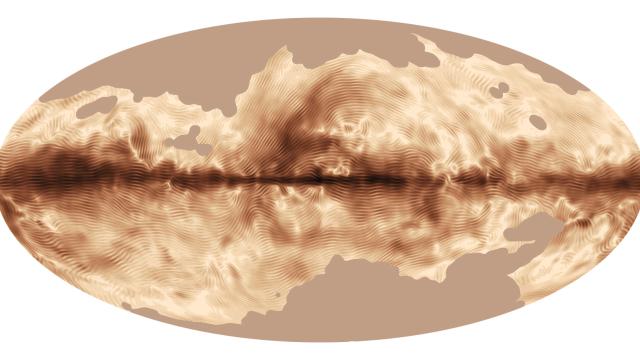The swirls, loops and arches in this image may look like a new artwork — but they are in fact the results of the first ever all-sky observations of polarised light emitted by interstellar dust in the Milky Way, and they represent the galaxy’s magnetic fingerprint.
Compiled from data acquired by the ESA’s Planck satellite, the image maps the polarisation of light from across the entire night sky. The European Space Agency explains why polarisation — the phenomenon whereby electromagnetic fields vibrate preferentially in certain directions — is so useful:
In space, the light emitted by stars, gas and dust can also be polarised in various ways. By measuring the amount of polarisation in this light, astronomers can study the physical processes that caused the polarisation. In particular, polarisation may reveal the existence and properties of magnetic fields in the medium light has travelled through…
Even though the tiny dust grains are very cold, they do emit light but at very long wavelengths — from the infrared to the microwave domain. If the grains are not symmetrical, more of that light comes out vibrating parallel to the longest axis of the grain, making the light polarised.
In fact, it’s the magnetic fields in the galaxy that cause spinning dust grains to become aligned preferentially with their long axis perpendicular to the direction of the magnetic field — which means this map of polarisation is also a visualisation of the magnetic fields in the Milky Way. [ESA]
